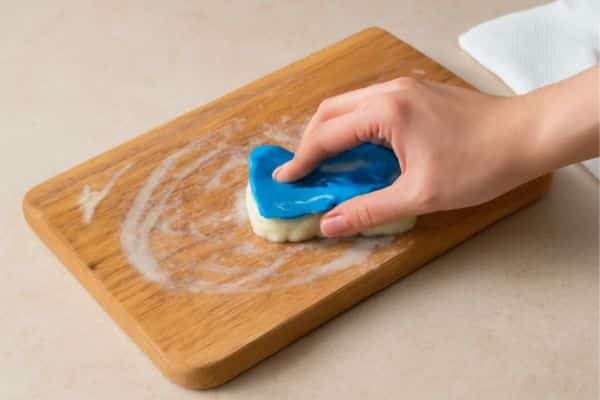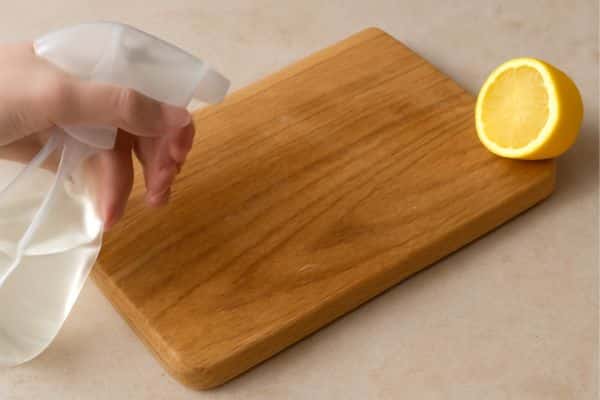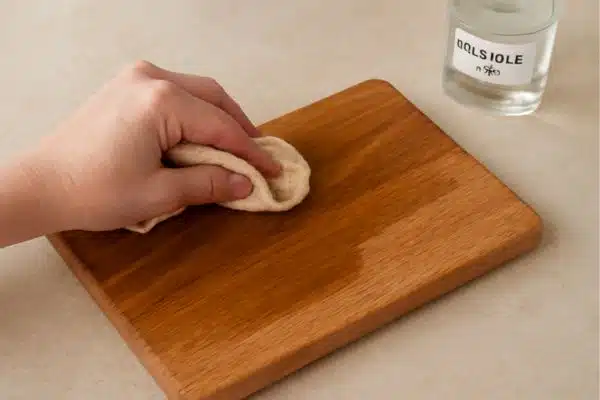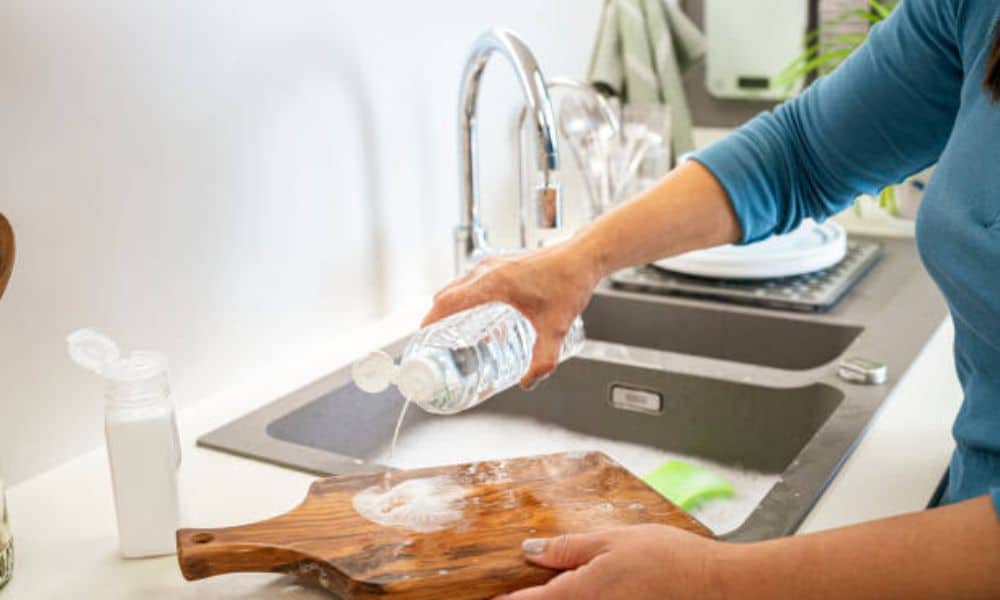I remember when I first bought my wooden cutting board. It was a beautiful, solid piece of craftsmanship, the kind that just made me feel like I was cooking in my grandmother’s kitchen. But over time, like all good things, it needed some TLC. I had to learn the hard way how to keep it clean, sanitized, and looking as good as new. Now, I’m sharing all those little tips and tricks I’ve learned over the years to help you do the same! Let’s dive into how to sanitize your wooden cutting board, keeping it safe and spotless, with step-by-step instructions based on my experience.
01. Gather Your Supplies
Before you start scrubbing away, let’s get everything together. You won’t need much, just a few simple items:
- Dish soap (a mild, natural one is best)
- Warm water
- White vinegar or lemon juice
- Baking soda (optional for tough stains)
- A clean cloth or paper towels
- Food-safe mineral oil or beeswax (for maintenance)
02. Clean the Surface

After you’ve given your wood cutting board a good scrub . To clean off any remaining food or debris, you’ll want to use a mild dish soap and warm water. Do not, repeat, do not soak your wooden board in water — it’s a no-go! The wood soaks up water, so it can eventually go brittle or warp.
I always grab a sponge or a soft bristled brush that’s gentle on the wood but gets down into all the grooves. Once you’ve scrubbed it well, rinse the board with warm water and then dry it with a clean cloth. Do not leave it wet indefinitely, as wood does love to take on a little water.
03. Sanitise with Vinegar or Lemon

It’s time to sanitise. A wooden cutting board is naturally bacteria-resistant, but that doesn’t exempt you. White vinegar is my favourite, as it is a natural disinfectant and safe for wood.
Pick up a spray bottle and combine equal parts vinegar and water. Spray the surface of the cutting board and let it stand for a minute or two. If you’re out of vinegar, freshly squeezed lemon juice can cut through grease, and it leaves a nice, fresh scent! For a high-quality cutting experience, check out the best cutting board for brisket, perfect for precision and durability.
04. Scrub Away Stubborn Odors or Stains

If you’ve got some tough caulk stains or odours that just won’t go away (garlic, anyone?), baking soda is your friend. I sprinkle a little baking soda right onto the board and then scrub it softly with a damp cloth. The natural abrasiveness of baking soda can lift stains out of the wood and leave it looking like new without causing damage.
Scrub and then wipe the board clean with a damp cloth to get rid of the remaining baking soda residue, and dry completely.
05. Apply Oil for Protection

This stage is as readily forgotten as it is crucial. To keep your cutting board attractive and prevent it from drying out, you’ll want to treat it with a layer of food-safe mineral oil or beeswax. I do this once a month, depending on how dry my board looks.
Just rub the oil into the wood using a clean cloth and work it into all the surfaces, including the edges. Allow the paste to sit for a few hours (or overnight) before wiping away the residue. This process helps to seal the wood, which also keeps it from cracking and in like-new condition.
Practical Tips from My Experience
- Don’t soak your board: This can cause the wood to swell, Warp, And crack. Always clean it with A damp cloth rather than dunking it in water.
- Deep cleaning: For deep cleaning, Use a diluted bleach solution (1 tablespoon bleach to 1 gallon of water), but only do this occasionally, And make sure to rinse well!
- Avoid harsh chemicals: Stick to natural cleaning agents like vinegar Or lemon juice. Avoid store-bought cleaners with harsh chemicals, As they can damage the wood over time.
- Keep it dry: After cleaning, Always make sure the board is thoroughly dry. Store it in a well-ventilated area To prevent any moisture buildup.
Types of Wooden Cutting Boards and When to Use Them
Now that we’ve covered cleaning, Let’s talk about the different types of wooden cutting boards And which one to use:
- Maple: A classic, sturdy choice for everyday use. It’s gentle on kitchen knives set and easy To maintain.
- Walnut: Softer than maple, walnut is great for cutting fruits and vegetables. It’s also elegant for serving.
- Cherry: Cherry develops a beautiful patina over time. It’s perfect For delicate tasks like slicing bread.
- Teak: Teak is durable and water-resistant, making it perfect for cutting meats or moist foods.
- Bamboo: An eco-friendly option that’s tough but can be hard On knives. It’s good Dor light tasks like prepping herbs.
Conclusion
Caring for your wooden cutting board doesn’t need to be complicated. With a little attention, It will last for years. Keep it clean, Sanitized, And oiled, And it will stay beautiful And functional. A well-maintained cutting board makes every meal feel more special, So give it the care it deserves!


